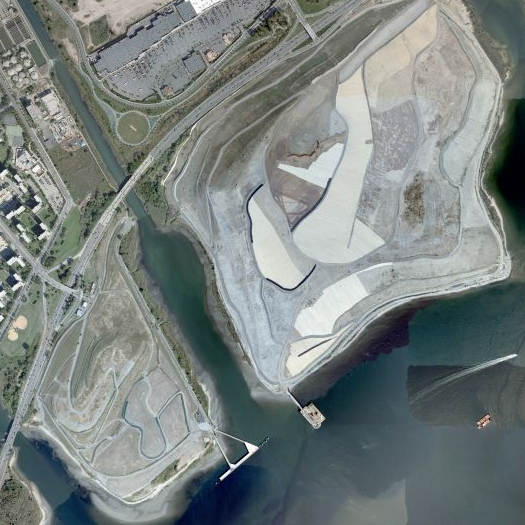The New York Times had a nice article yesterday on a pair of Brooklyn landfills that are, with generous assistance from John McLaughlin, from the city’s Department of Environmental Protection, and landscape architect Leslie Sauer (of Andropogon), developing functional, self-regulating artificial ecologies:
In a $200 million project, the city’s Department of Environmental Protection covered the Fountain Avenue Landfill and the neighboring Pennsylvania Avenue Landfill with a layer of plastic, then put down clean soil and planted 33,000 trees and shrubs at the two sites. The result is 400 acres of nature preserve, restoring native habitats that disappeared from New York City long ago… Once the plants take hold, nature will be allowed to take its course, evolving the land into microclimates. In some areas that turned out to be damper than had been foreseen, sassafras and black oak, which prefer dry soil, are not doing as well as expected, but other plants should prosper, Mr. McLaughlin said… Birds including ospreys, egrets and snowy owls are spotted and counted at the former landfills.

The restoration required re-thinking the standard procedure for capping and planting landfills:
During that era… the piles were “capped” with a layer of clay and plastic to keep water out, and covered with a few inches of soil. The usual practice was to plant grass and mow it as if it were a big lawn…
While working as a consultant for Fresh Kills, a former city garbage dump on Staten Island, [Sauer] surveyed the fate of other closed landfills. “We could not find one landfill that was being maintained,” she said. Instead of a manicured lawn, the landfill grass inevitably turned into “a weedy junk pile,” she said.
Three feet of soil on top of the landfill cap would hold more moisture, Ms. Sauer surmised, allowing a wider array of plants to grow. Even trees. The common wisdom was never to put trees on a landfill because the roots would push down and puncture the cap.
But in her surveys, Ms. Sauer found that trees inevitably started growing on top of landfills anyway, and that roots typically spread out in a wide but fairly shallow pattern. The network of roots would also do a better job of holding the soil together against erosion than plain grass, and the result might be a sustainable ecology instead of a monotonous grassy hill that required continuous lawn care.
A radio report from WNYC provides further insight, describing McLaughlin’s planting scheme and process:
… he’s painstakingly mimicking what he’s learned from other coastal forests. He’s analyzed each load of dirt, down to the macro and micronutrients. He’s got each tree and shrub barcoded, with information like what nursery they came from, and when they were planted. He’s studied each species’ ratio in the wild, and his planting is guided by a computer-generated design plan and a global position system.
Which implies that the landscape evolving on these landfills may be clean, and may be healthy, but it is not at all natural (in the sense of “without us”) — rather, it is an augmented, cybernetic landscape, held together by the messy interaction of natural processes and digital crutches. Which is a rather compelling vision of the future.

